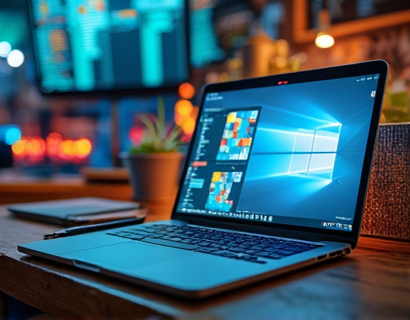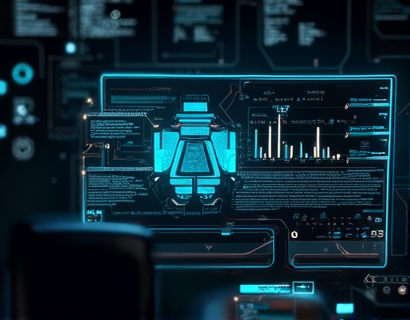Decentralized File Management: Transforming Business Collaboration
In the digital age, efficient and secure file management is crucial for businesses and teams aiming to enhance collaboration and productivity. Traditional centralized file management systems often fall short in providing the necessary security and efficiency required in today's fast-paced work environment. This is where decentralized file management emerges as a revolutionary solution, offering a robust, secure, and user-friendly approach to handling files and information. This article delves into the benefits and functionalities of decentralized file management platforms, highlighting how they can redefine business collaboration.
Understanding Decentralized File Management
Decentralized file management refers to a system where files and data are not stored in a single central location but are distributed across a network of nodes. This approach eliminates the single point of failure inherent in centralized systems, thereby enhancing security and reliability. Each node in the network has a copy of the data or a portion of it, ensuring that files are always accessible and resilient to attacks or data loss.
The core principle of decentralization in file management is to distribute control and responsibility among multiple participants. This not only improves security by reducing the risk of a single breach but also enhances performance by allowing parallel processing and reducing latency. For businesses, this means faster access to files and more efficient collaboration, regardless of the team's geographical location.
Key Benefits of Decentralized File Management
One of the most significant advantages of decentralized file management is enhanced security. By distributing data across multiple nodes, the risk of a single point of failure is minimized. Even if one node is compromised, the rest of the network remains secure, protecting sensitive information from unauthorized access. This distributed approach also makes it difficult for cybercriminals to launch successful attacks, as they would need to compromise multiple nodes simultaneously.
Another key benefit is improved efficiency and productivity. Decentralized systems allow for parallel processing, meaning multiple users can access and work on files simultaneously without the bottlenecks associated with centralized systems. This results in faster file retrieval and sharing, streamlining workflows and boosting overall team efficiency. Additionally, the user-friendly interfaces of decentralized platforms make it easy for team members to organize and manage files, reducing the time spent on administrative tasks.
User-Friendly Interfaces for Seamless Collaboration
A critical factor in the success of any file management solution is its ease of use. Decentralized platforms are designed with a focus on user experience, providing intuitive interfaces that simplify file organization and sharing. These platforms typically feature drag-and-drop functionality, clear folder structures, and advanced search capabilities, making it straightforward for users to find and access the files they need.
For teams, the ability to collaborate in real-time is invaluable. Decentralized platforms often include features such as version control, allowing multiple users to work on the same document without overwriting each other's changes. This ensures that all team members are always working with the most up-to-date version of a file, reducing errors and conflicts. Moreover, these platforms often integrate with other tools and services, such as project management software and communication apps, further enhancing the collaborative experience.
Robust Security Measures
Security is a top priority in decentralized file management. The distributed nature of these systems inherently provides a higher level of security compared to centralized solutions. However, decentralized platforms go beyond this by implementing advanced cryptographic techniques to ensure data integrity and confidentiality.
Data is typically encrypted both in transit and at rest, meaning that even if a node is accessed unauthorized, the data remains unreadable without the proper decryption keys. Access controls are also a critical component, allowing administrators to set permissions for different users and groups, ensuring that only authorized personnel can access sensitive information. Additionally, decentralized platforms often employ blockchain technology to create immutable records of file transactions, providing an auditable trail that enhances accountability and trust.
Scalability and Flexibility
Decentralized file management platforms are highly scalable, capable of handling large volumes of data and a growing number of users without compromising performance. This scalability is achieved through the addition of more nodes to the network, which can be easily managed and expanded as needed. This flexibility makes decentralized solutions ideal for businesses of all sizes, from small startups to large enterprises.
Moreover, these platforms are designed to be adaptable to various use cases and industries. Whether it's storing and sharing large multimedia files, managing sensitive financial data, or collaborating on complex projects, decentralized file management systems can be tailored to meet specific organizational needs. This versatility ensures that businesses can leverage the benefits of decentralization without being constrained by rigid system limitations.
Case Studies and Real-World Applications
To better understand the practical applications of decentralized file management, let's look at a few real-world examples. In the healthcare industry, where patient data privacy and security are paramount, decentralized platforms can ensure that medical records are securely stored and easily accessible to authorized personnel across different locations. This not only improves patient care but also complies with stringent data protection regulations.
In the creative industry, teams working on multimedia projects can benefit from the real-time collaboration features of decentralized platforms. Artists, designers, and writers can work on the same document simultaneously, with changes reflected instantly for all team members. This streamlines the creative process and enhances productivity, allowing projects to move forward more efficiently.
Another example is in the field of research and development, where large datasets and complex files are common. Decentralized file management systems can handle the storage and sharing of these files, ensuring that researchers can collaborate seamlessly across different institutions and geographical locations. The immutable nature of blockchain-based records also provides a transparent and trustworthy audit trail for research data.
Challenges and Considerations
While the benefits of decentralized file management are clear, there are also challenges and considerations that organizations should be aware of. One of the primary concerns is the initial setup and integration with existing systems. Transitioning from a centralized to a decentralized model may require significant changes in workflow and infrastructure, which can be resource-intensive.
Another consideration is the need for user education and training. Since decentralized platforms operate differently from traditional systems, it's essential to provide comprehensive training to ensure that all team members are comfortable using the new tools. This includes understanding concepts like blockchain, cryptography, and decentralized networks.
Performance can also be a factor, particularly in scenarios where network connectivity is inconsistent or bandwidth is limited. While decentralized systems are designed to be resilient, the performance can vary based on the number of nodes and the network's overall health. Organizations should evaluate their network infrastructure and consider using hybrid models that combine decentralized and centralized elements to optimize performance.
Future Trends in Decentralized File Management
The future of decentralized file management is promising, with several trends shaping its evolution. One such trend is the integration of artificial intelligence and machine learning to enhance file organization and search capabilities. AI can analyze file content and metadata to provide more accurate and relevant search results, further improving efficiency.
Another trend is the adoption of decentralized applications (dApps) that extend beyond file management to encompass a wide range of collaborative tools. These dApps can integrate with decentralized file management platforms, creating a comprehensive ecosystem for business collaboration. The rise of Web3 technologies, including decentralized storage solutions like IPFS (InterPlanetary File System), is also set to play a significant role in the development of more robust and user-friendly decentralized platforms.
As the technology matures, we can expect to see more businesses and organizations embracing decentralized file management. The combination of enhanced security, improved efficiency, and greater flexibility makes it an attractive option for those looking to stay ahead in a competitive market.
Conclusion
Decentralized file management represents a significant shift in how businesses and teams handle files and information. By leveraging the principles of decentralization, these platforms offer unparalleled security, efficiency, and collaboration capabilities. While there are challenges to consider, the benefits far outweigh the drawbacks, making decentralized solutions a compelling choice for organizations seeking to optimize their information management processes. As the technology continues to evolve, the future of business collaboration looks increasingly decentralized, secure, and efficient.











































